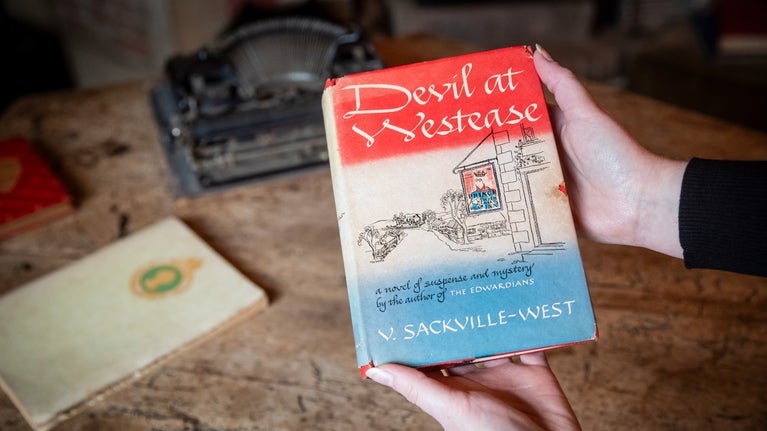Get ‘between the covers’ with Vita Sackville-West as exhibition explores her life and literature for the first time

Vita Sackville-West is known the world over as one of the 20th century’s most influential gardeners and whose same sex relationships with writers like Virginia Woolf have been well documented. However, Vita’s output as a writer who explored love and identity was prolific, but much of her work has fallen into obscurity. For the first time at Sissinghurst, in Kent, the home Vita shared with her husband Harold Nicolson, a new exhibition by the National Trust will put the spotlight on her writing through ten of her works.
“Vita wanted to be known primarily as a writer, and at the height of her career she was better known than her friend and lover Virginia Woolf,” explains the exhibition’s co-curator Noël van Riswick. “But today, it is Virginia who is the more famous of the pair for her published work.
“Vita’s writing embraced a wide range of genres from murder mystery and science fiction to poetry and novels, and she was among the first writers to create women characters with a mind of their own. Her writing has since come to be seen as trailblazing in its exploration of love, sex and trans identity.”
Although Vita had an open marriage with Harold, she was careful to conceal the identities of the women lovers who inspired her in her writing. For example, in the poem ‘The Dancing Elf’ (1912), her first published work, she dedicates it to ‘RG’ (her first love and schoolmate, Rosamund Grosvenor), noting ‘‘sweet Spirit of the night…for ever young, for ever fair,’’ which captured an ethereal quality Vita saw in Rosamund.
At the time of publication, Vita was about to marry Harold in a very public marriage of the season, and so speculation was rife among members of society and the media as to the identity of ‘RG’.
Women in Vita’s life could also be obstructive regarding her writing. Fearing a scandal from Vita’s thinly veiled love affair with her lover Violet Trefusis in the book ‘Challenge’ (1923), delving into themes of censorship, rebellion, and trans identity, Vita’s mother Lady Sackville got the book banned from release in the UK, which enraged her daughter: “I hope Mama is pleased. She has beaten me.”
Vita’s relationships with female members of her family are also explored within her writing, including her first novel ‘Heritage’ (1919) in which the protagonist, Ruth Pennistan, is a farmer’s daughter whose striking features hint at a forgotten heritage – a Spanish Gypsy grandmother, inspired by Vita’s own grandmother, Pepita. Vita’s mother had a different reaction to this book, writing over 150 letters of recommendation to shops and friends.
For the exhibition, the National Trust is shining a spotlight for the first time on a printing press, from the Hogarth Press, a publishing company owned by Virginia Woolf and her husband Leonard Woolf. The couple were committed to supporting literary experimentation and women’s voices in literature.
The press printed many of Vita’s works at the height of her literary career, including ‘All Passion Spent’ (1931), one of her most acclaimed novels and a bestseller, which tells the story of an elderly widow who surprises her family by embracing independence after the death of her husband and showed the power of reclaiming one's life, offering an optimistic perspective on growing older.
On display for the first time will be a rare copy of ‘Devil at Westease’ (1947), Vita’s only murder mystery during a brief foray into the world of crime writing, and which was published abroad but not in the UK. Visitors can also see personal objects such as one of Vita’s notebooks, an original watercolour design for her book ‘The Air’ and a letter opener made from a shoe that belonged to her grandmother.
The exhibition also features a series of illustrations and an animated film by artist Sarah Tanat-Jones, who has previously illustrated the book ‘Queer Heroes’ (2019) which features LGBTQ+ people from history. Sarah’s designs will reflect aspects of Vita’s life and literary legacy.
Between the Covers with Vita: The Life and Literature of Vita Sackville-West opens at Sissinghurst on Monday 10 February and runs until Sunday 7 September.
For further information and opening times, visit www.nationaltrust.org.uk/sissinghurst